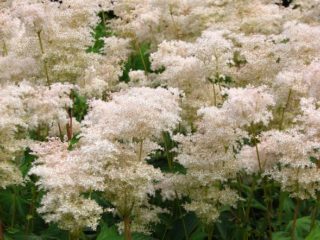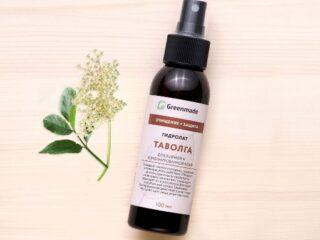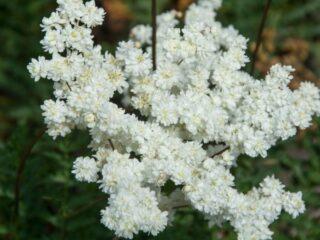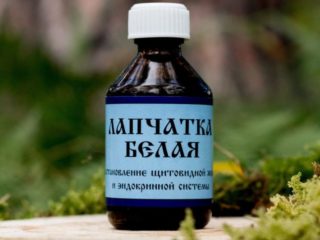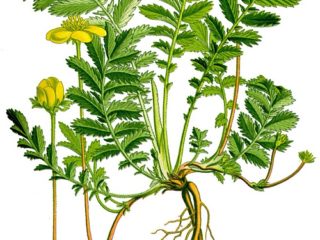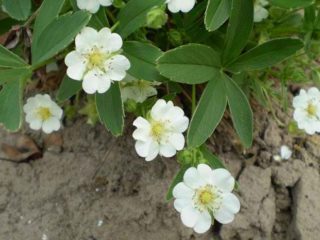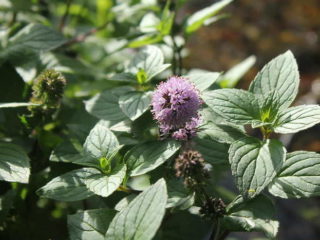Content
Meadowsweet or meadowsweet is a medicinal plant that contains salicylic acid, which is found in aspirin. In ancient times, many peoples considered it a talisman against evil spirits and enemies. The plant has retained its relevance to this day, which is why it is widely used in folk medicine. If desired, meadowsweet can be grown on your own plot, since this crop has not only medicinal, but also high decorative qualities.
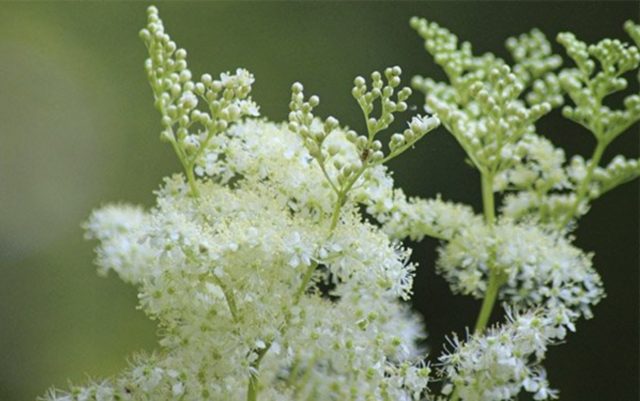
Common meadowsweet remains decorative throughout the season
What it looks like and where it grows
According to the description, common meadowsweet (photo below) is a spreading perennial herbaceous shrub. The plant belongs to the Rosaceae family. Under natural conditions it grows in temperate climate zones of the Northern Hemisphere.It prefers moist soils, so it can be found on forest edges, meadows, clearings and steppe slopes.
The height of common meadowsweet reaches 80 cm. It forms erect, ribbed shoots. Young branches have a green surface, but as they mature, they acquire a reddish tint. The leaves are finely dissected, pinnate, bright green in color. The length of the plates reaches 15-20 cm. They consist of separate 5-7 segments and are attached to a common petiole.
There is slight serration along the edge of the plates. The leaves of the common meadowsweet are mostly concentrated at the base of the plant and form a basal rosette. On shoots, the plates are less common and are located opposite. The surface of the leaves is matte, with slight hairiness on the reverse side.
Meadowsweet has a long creeping root with spherical or spindle-shaped nodules. The diameter of its growth is 50 cm. It is quite strong and branches well along the soil surface. Buds form on it, from which flowering shoots eventually grow.
In the second half of May, meadowsweet blooms. Its buds are simple, consisting of 6 petals, and in the center, when opened, you can see fluffy stamens. The shade is creamy white. Their diameter does not exceed 0.5-1.0 cm. They form paniculate apical inflorescences that confidently rise above the rosette of leaves. When opened, the buds emit a pleasant, unobtrusive aroma.
At the end of August, meadowsweet produces fruits. They are a multi-nut. When ripe, it cracks and seeds spill out.
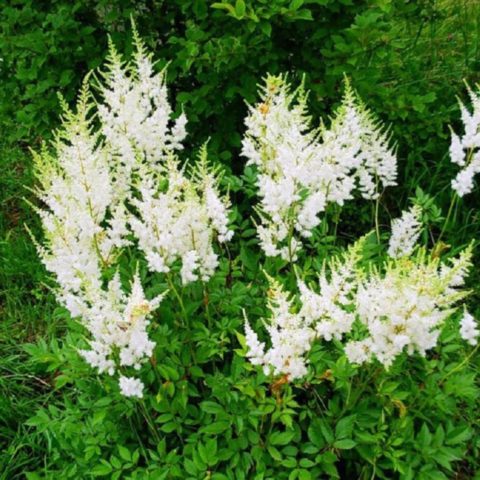
The flowering period of common meadowsweet lasts a month.
Chemical composition
The plant is characterized by a high content of useful components. At the same time, all parts of the common meadowsweet have healing properties.
The roots of the plant contain the glycoside gaultherin, a high concentration of starch, tannins and ascorbic acid.
The flowers of the plant contain:
- vitamin C;
- a whole complex of phenologlycosides;
- coumarins;
- flavonoids;
- tannins;
- methyl alcohol salicylic acid;
- essential oil;
- tannins.
Leaves and shoots of common meadowsweet are also valuable medicinal raw materials. They contain carotene, ascorbic acid, anthocyanins, flavonoids, and tannins.
Medicinal properties of meadowsweet
Due to its rich chemical composition, the plant is used for medicinal purposes. The beneficial properties of common meadowsweet help solve many health problems.
Folk remedies based on this plant have the following effects:
- diaphoretic:
- anti-inflammatory;
- astringent;
- diuretic;
- antibacterial;
- choleretic;
- restorative;
- soothing;
- antiscorbutic;
- pain reliever;
- antiseptic;
- bactericidal.
The wide spectrum of action makes it possible to use meadowsweet to treat many diseases. The root has a beneficial effect on the functioning of internal organs and systems. It also helps relieve cramps and pain. Powder from the root, when applied externally, promotes wound healing and stops bleeding.
Meadowsweet flowers are effective against worms. They are also recommended for use in cases of renal failure and disorders of the genitourinary system. The astringent effect of the inflorescences helps normalize stool and improve intestinal function.
The leaves and shoots of the plant help relieve tension, fatigue and stress. These parts are used to treat colds. Crushed powder based on them is used for burns and diaper rash.
The use of meadowsweet is justified for the following diseases:
- diabetes;
- gout, rheumatism;
- thrombosis;
- hypertension;
- haemorrhoids;
- viral infections;
- gynecological diseases;
- pneumonia;
- bronchitis;
- polyp;
- Anthony;
- heart diseases;
- psoriasis;
- herpes;
- inflammation of the sciatic nerve;
- intercostal neuralgia;
- epilepsy.
Cooking methods
Meadowsweet can be used to prepare many healing remedies. But for them to be truly effective, it is necessary to strictly adhere to all recommendations and comply with the indicated dosage.
Tincture
This folk remedy is suitable for long-term storage, as it is prepared using vodka. To do this, you need to add 15 g of crushed medicinal raw materials to 200 ml of drink. Pour the mixture into a glass container and close the lid tightly. Leave for 3 days, shaking occasionally. Take 30 ml daily morning and evening.
This remedy is recommended to be taken orally for diseases of the digestive system. And also externally for skin infectious pathologies, and as a rub for arthrosis and rheumatism.
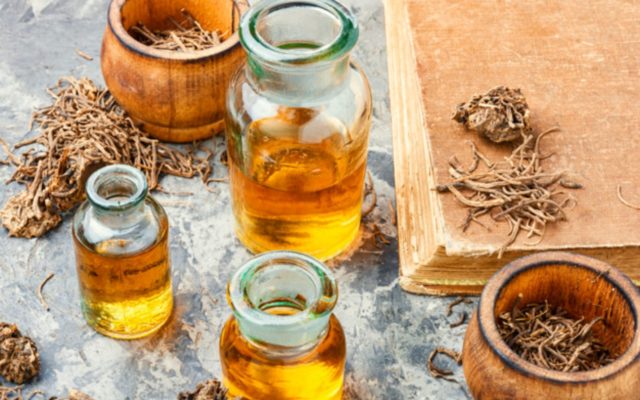
The tincture retains its medicinal qualities for 1 year
Infusion
To prepare this remedy, you need to add 1 tsp to 250 ml of boiling water. raw materials, cover with a lid. Leave the infusion for 30 minutes, cleanse. For ARVI, take 0.5 cups of the drink orally at night as a diaphoretic.
For diarrhea and severe swelling, drink 100 ml infusion twice a day. It can also be used externally to treat herpes, psoriasis, and ulcers.
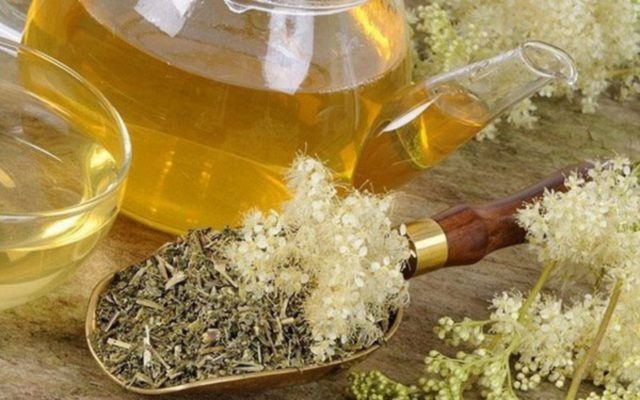
The infusion must be prepared immediately before use.
Decoction
To prepare this healing product, you need to pour 30 g of raw material into 500 ml of water and mix. Boil the mixture for 20 minutes in a water bath, cool. It must be strained before use. Take 2-3 times a day, 30 ml. The decoction helps with hypertension, normalizes water balance in the body and relieves swelling.

Store the broth for no more than 2 days in the refrigerator.
Tea
This drink helps relieve fatigue, normalize sleep and increase stress resistance. To prepare it you need 1 tsp. Pour 300 ml of boiling water over dried meadowsweet flowers and leave for 15 minutes. Drink tea 2 times a day, 100 ml.

You can add honey to your tea to improve the taste.
Ointment
This remedy is recommended for external use to treat diseases such as psoriasis, herpes, and burns. To prepare it, you need to melt Vaseline, lanolin, or glycerin in a water bath. Add crushed leaves in powder form in a ratio of 2 to 3, mix. The product can be used when it has cooled down. Apply to problem areas of the skin 2 times a day.
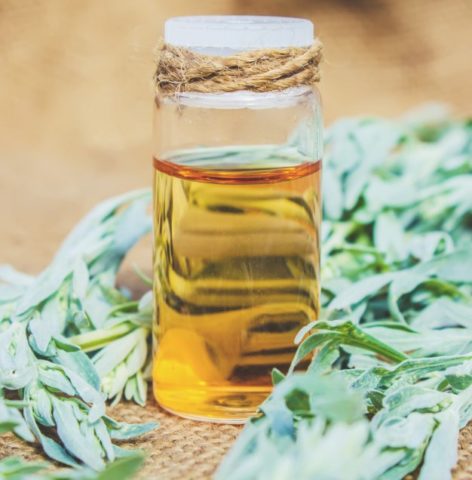
Before applying the ointment, the skin must be cleansed
Use in folk medicine
Meadowsweet is also used for targeted action. They are effective for a specific disease. During their preparation, you must follow the dosage to avoid side effects.
Treatment of stomach ulcers with meadowsweet
Pour 50 g of crushed leaves and shoots of meadowsweet into a glass container. Pour 600 ml of vodka and add 20 g of sugar, stir.Leave in the dark for 2 weeks, shaking the container periodically. Peel and take before meals 3 times a day.
Against diarrhea
Pour 100 g of dried meadowsweet flowers with 400 ml of boiling water. Keep the resulting mixture in a thermos for 4 hours. Before use, remove any impurities. Drink 2 times a day until the unpleasant symptoms are completely eliminated.
For the treatment of kidney stones
To prepare a healing remedy, you need 2 tsp. Place dried meadowsweet flowers in a thermos. Pour 250 ml of boiling water over them, close tightly with a lid. Leave for 4 hours. Take 50 ml 4 times a day before meals.
To normalize the hormonal levels of women
Mix 1 tbsp. l. flowers of meadowsweet, linden, red clover. Pour into a thermos and pour 1 liter of boiling water. Leave for 2 hours. Strain before use. Take the drink twice a day, drinking 200 ml before meals.
For colds, to improve immunity
Place 10 pieces in a pan. chopped meadowsweet inflorescences, 12 tbsp. l. honey and pour 250 ml of water. Simmer the resulting mixture in a water bath for 10 minutes after boiling. Upon completion of preparation, filter the drink. Take 50 ml before meals, diluting with 200 ml of water.
Contraindications
Products based on meadowsweet have a healing effect. But they cannot be used during pregnancy and lactation, as well as for people with chronic constipation, low blood pressure, and poor blood clotting.
Growing six-petalled meadowsweet from seeds and care
To grow this crop on the site, it is necessary to plant the seeds in late autumn so that they can undergo natural stratification in winter. To do this, you need to choose a shady place where moisture will not stagnate. Dig it up, add it to each square. m. 5 kg of humus and carefully level the surface. Make separate holes and plant meadowsweet seeds to a depth of 1-2 cm in moist soil.
In the spring, plant shoots will appear; when they become stronger, they need to be planted at a distance of 30 cm. Growing meadowsweet will not cause much trouble for the gardener. Watering should be carried out only during a long absence of rain. The plant needs to be fed in autumn and spring with organic fertilizers.
Meadowsweet can grow in one place for 7 years. But to maintain its decorative effect, it is necessary to trim it regularly in the spring and again at the end of summer. Subsequently, it can be propagated by dividing the bush in spring and late summer.
If signs of powdery mildew or rust appear, meadowsweet should be treated twice with Skor or Topaz. In case of aphid and spider mite infestation, Actellik should be used.
Common meadowsweet can subsequently self-seed, so it is necessary to control this process and prevent the plant from spreading in the area.
Collection and preparation
It is necessary to collect medicinal raw materials at different times of the year, when useful components accumulate in certain parts. Leaves and shoots of meadowsweet need to be harvested throughout the summer. It is recommended to collect flowers in May-June, and roots should be dug in the fall.
The collected raw materials should be washed and dried in a dark place, excluding direct sunlight.The meadowsweet collection should be stored in linen bags at low humidity in a glass container in the dark.
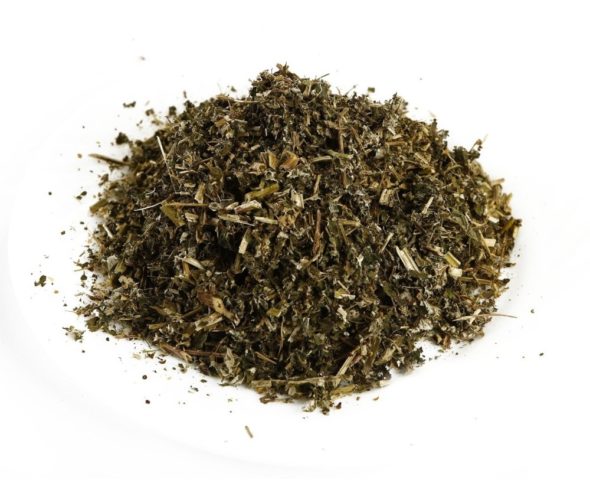
Shelf life of medicinal raw materials – 2 years
Conclusion
Meadowsweet is a unique plant that has a whole range of healing qualities. But for this crop to truly bring health benefits, it is necessary to properly prepare the raw materials and subsequently store them. It is also important to follow all recommendations for preparing products and take into account existing contraindications. Otherwise, therapy with meadowsweet will turn out to be not only useless, but also harmful to the body.
